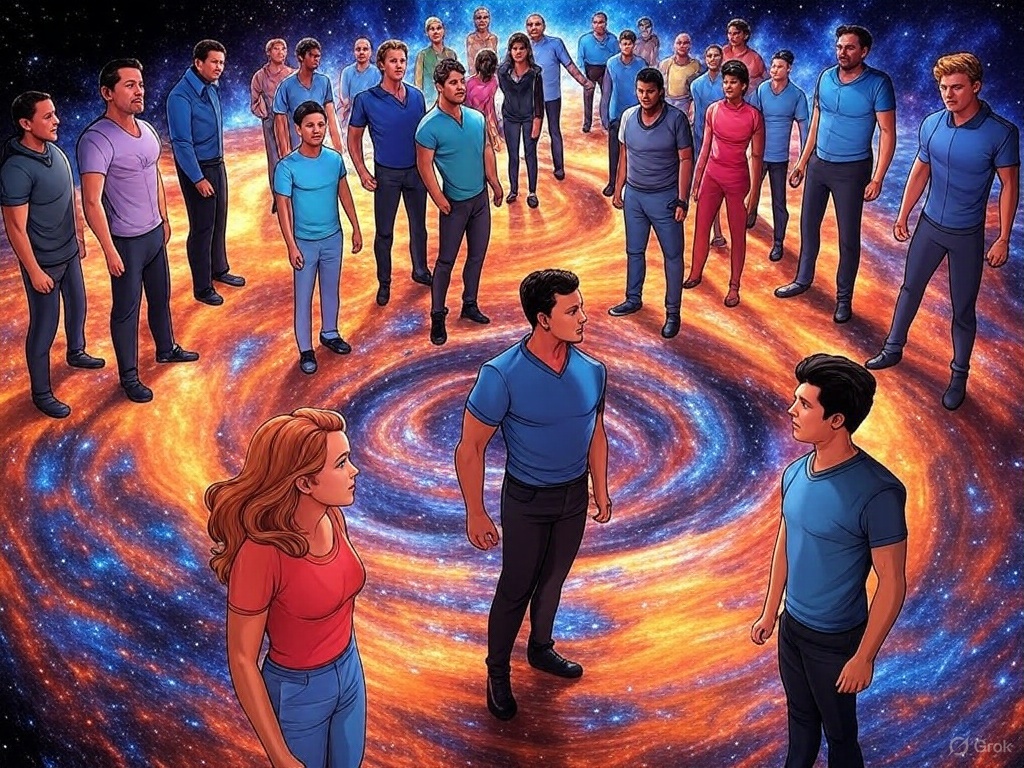We might be stuck as characters on a cosmic comic strip—our three-dimensional universe sketched onto the event horizon of a four-dimensional black hole—but that doesn’t mean the story ends there. Like ink smudges or creases on a page, the universe could be leaking clues about its higher-dimensional roots. We can’t peek beyond our 3D boundary, but with the right tools, we might just "feel" the 4D hand that drew us.
Last time, we imagined our universe born from a 4D star’s collapse, its 3D horizon becoming our reality—a vast, curved canvas 46 billion light-years wide. We wondered if the matter-antimatter mystery (why we’re here, not annihilated) was etched in during that birth. Now, let’s flip the page: if we’re trapped on this hypersurface, how do we spot the extra dimension? The answer lies in anomalies—tiny quirks in particles, gravity, and cosmic messengers that don’t quite fit our 3D rulebook.
Take particles with strange masses. The muon, a hefty cousin of the electron, weighs in at 105.7 MeV—207 times its lighter kin. The top quark, a staggering 173 GeV, dwarfs other quarks like the bottom at 4.2 GeV. These gaps feel random in our Standard Model, but in a 4D setup, they might be echoes of a compactified dimension. Picture it like a guitar string looped tight: each vibration adds mass, creating a "tower" of particles. If our 3D horizon hides a 4D curl, the muon or top could be higher notes—clues to the size of that unseen loop. The Large Hadron Collider’s hunting for such towers, and a muon anomaly in recent g-2 experiments (a wobble in its magnetism) might already be whispering 4D secrets.
Then there’s the supermassive black hole at our galaxy’s heart, Sagittarius A*. Its 4 million solar masses warp spacetime into a gravitational pit, bending light into the shadow we’ve photographed. But what if that warping is more than 3D gravity? Imagine it as a 4D "bump" on our horizon—a depression we feel as curvature. If a supernova explodes behind it, neutrinos—those ghostly particles that slip through everything—could graze its edge. A tweak in their paths, energies, or timing might betray a 4D ripple, like feeling raised ink on paper. Detectors like Hyper-Kamiokande could catch this if luck aligns a stellar blast just right.
Gravity itself might spill the beans. In 3D, it weakens with distance squared, but a 4D leak could shift that at tiny scales—say, a millionth of a meter—or show up as odd waves from black hole mergers. LISA, a future space-based detector, might hear extra vibrations from a spinning 4D parent. Even our universe’s expansion, blamed on dark energy, could be the horizon stretching under 4D spin—a cosmic clue we’ve misread.
We’re blind to the 4D bulk, sure, but these hints—mass oddities, neutrino quirks, gravitational glitches—are like smudges on our page. They suggest our 3D reality isn’t the whole story, that our comic strip has a deeper draft. The trick is catching them: a supernova’s rare, particle towers hide at high energies, and 4D signals could mimic 3D noise. Yet, with sharper tools—colliders, telescopes, detectors—we might trace the artist’s hand. Next time you ponder the stars, think: those twinkles might be footnotes to a 4D tale we’re just starting to read.
